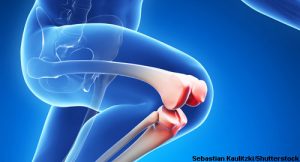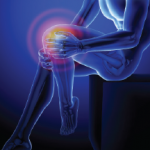 Approximately 14 million adults in the U.S. have knee osteoarthritis (OA), and many have concomitant meniscal tear. Patients can be treated with arthroscopic partial meniscectomy surgery or physical therapy. Preliminary evidence suggests that, in the short term, the outcomes are similar for both treatment approaches. Example: In 2013, a small, single-center clinical trial found that for patients with meniscal tears, arthroscopic partial meniscectomy with physical therapy and physical therapy alone were both associated with improvements in pain and function.1
Approximately 14 million adults in the U.S. have knee osteoarthritis (OA), and many have concomitant meniscal tear. Patients can be treated with arthroscopic partial meniscectomy surgery or physical therapy. Preliminary evidence suggests that, in the short term, the outcomes are similar for both treatment approaches. Example: In 2013, a small, single-center clinical trial found that for patients with meniscal tears, arthroscopic partial meniscectomy with physical therapy and physical therapy alone were both associated with improvements in pain and function.1
New research extends these findings and indicates that pain from meniscal tears improves considerably over the long term (60 months) in patients who receive operative management, as well as in those who receive non-operative management. The results suggest that both strategies are associated with generally favorable outcomes in middle-aged and older patients with knee pain, osteoarthritic changes and degenerative meniscal tear. Jeffrey N. Katz, MD, senior biostatistician in the Orthopedic and Arthritis Center for Outcomes Research at Brigham and Women’s Hospital, Boston, and colleagues also found that patients who received arthroscopic partial meniscectomy were more likely than those who received only physical therapy to undergo total knee replacement. The investigators published their results online Aug. 20 in Arthritis & Rheumatology.2
The researchers recruited patients with degenerative meniscal tear to participate in the Meniscal Tear in Osteoarthritis Research (MeTeOR) trial. The 351 patients had a mean age of 58 years old, mean body mass index of 30 and Knee Osteoarthritis and Injury Outcome Scale (KOOS) Pain scores of approximately 46. Patients were randomized to receive physical therapy or arthroscopic partial meniscectomy. In both study arms, patient pain scores improved substantially over the first three months, continued to improve through 24 months and were stable from Month 24 to Month 60.
“We were surprised to see that gains in pain and function made over the first year of intervention were maintained for so long,” says Dr. Collins. When the investigators analyzed Western Ontario and McMaster Universities Osteoarthritis Index (WOMAC) function scores, they found they were similar to the KOOS Pain scores, showing substantial improvements in the first year for both groups.
Over the first three months, the investigators found the KOOS Pain scores differed between the two groups. Patients randomized to arthroscopic partial meniscectomy experienced a decrease in KOOS Pain score of -7.4 points per month, while those randomized to physical therapy experienced a decrease in KOOS Pain score of -5.90 points/month. Perhaps because of this less robust decrease in pain, 68 of the 177 patients randomized to physical therapy crossed over to arthroscopic partial meniscectomy. The majority (79%) of these crossovers occurred in the first six months after randomization.


